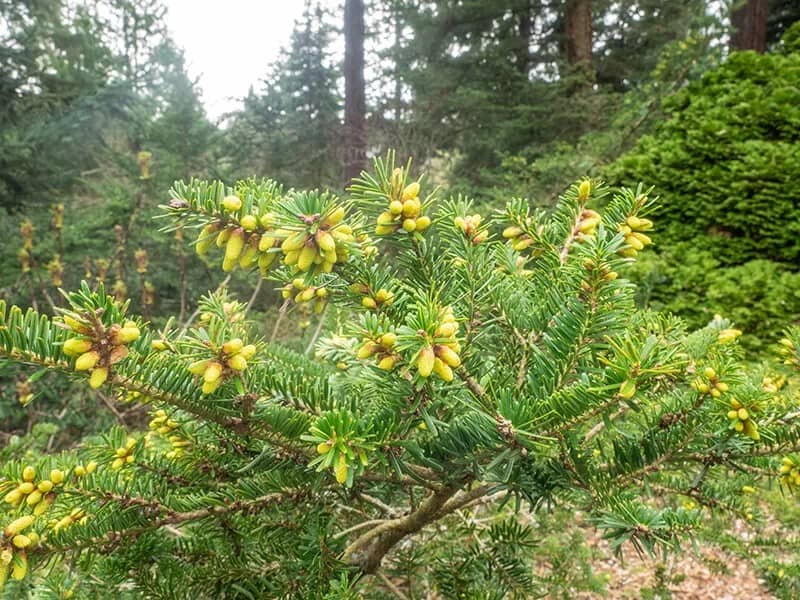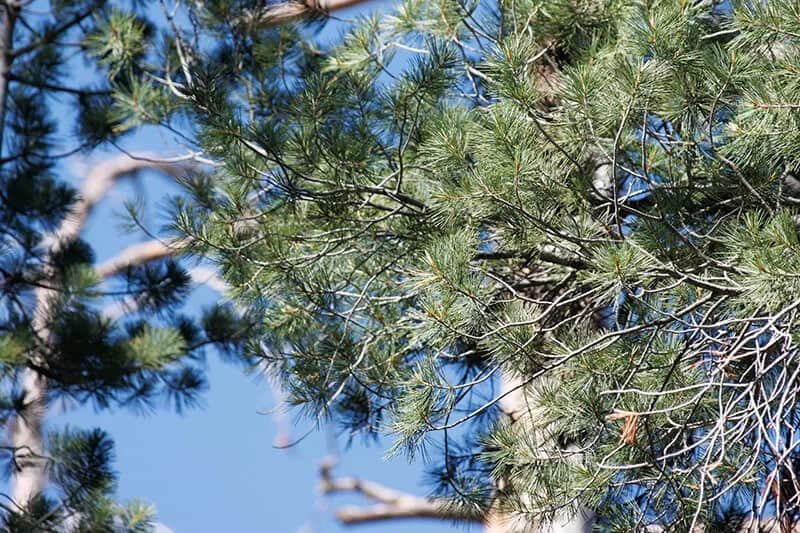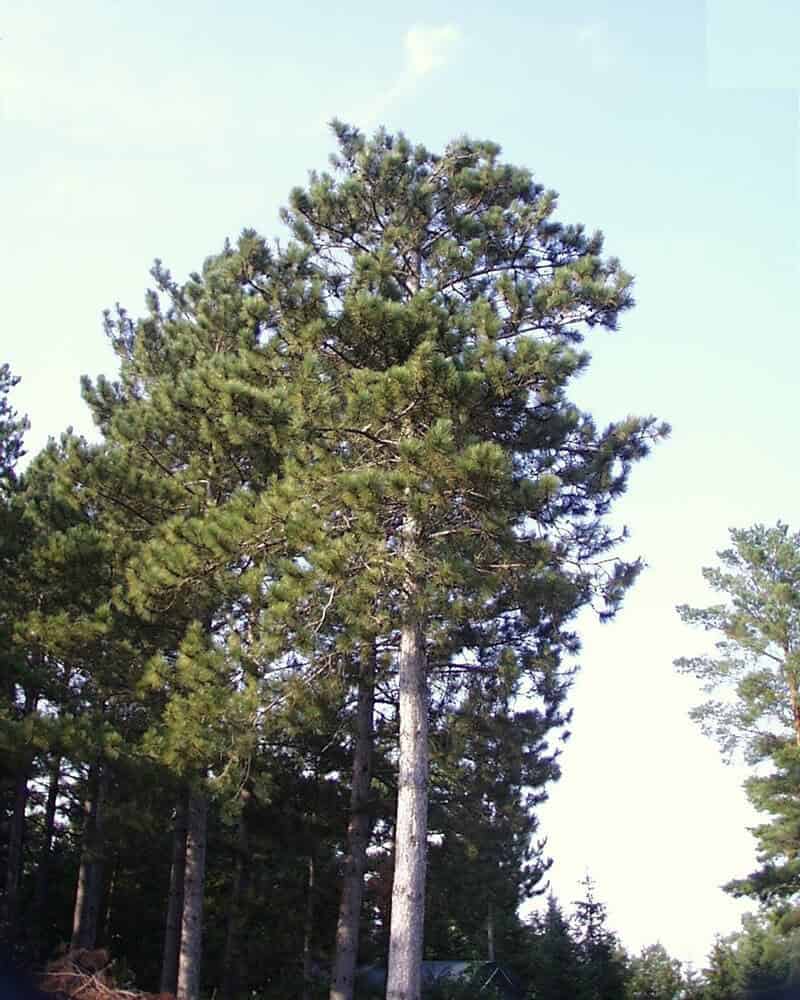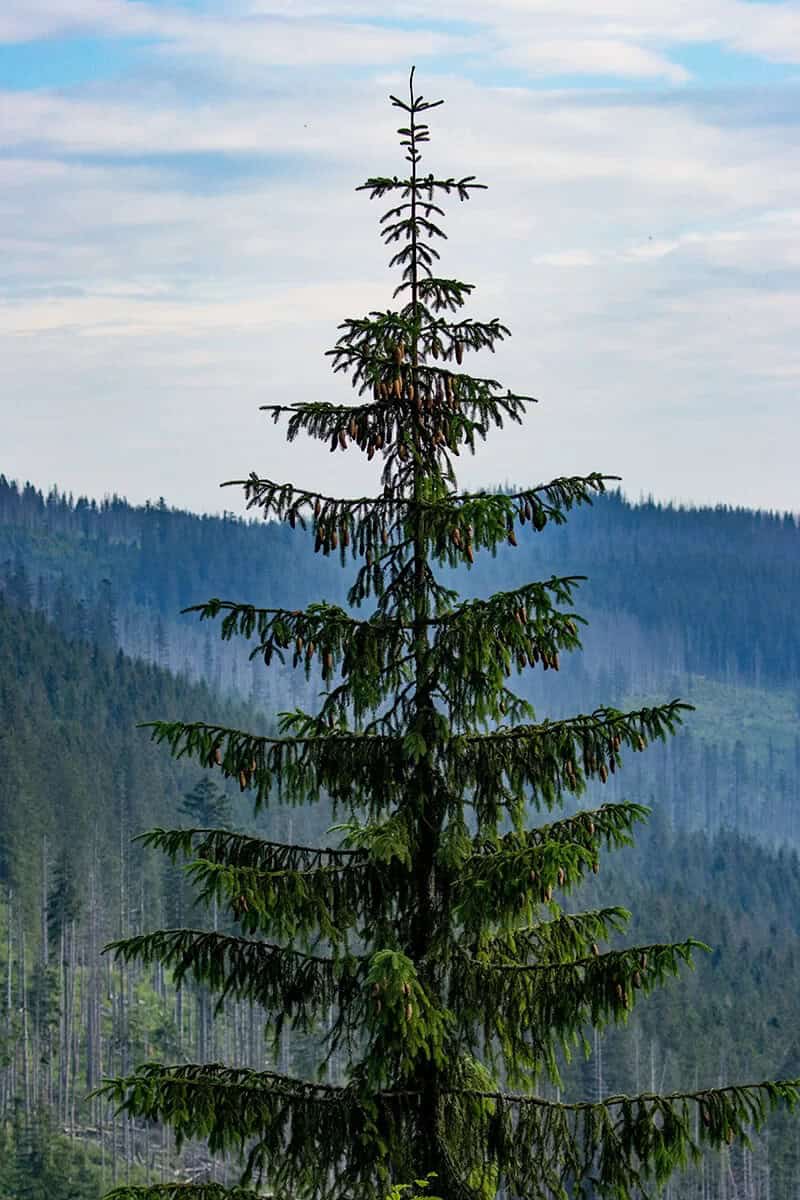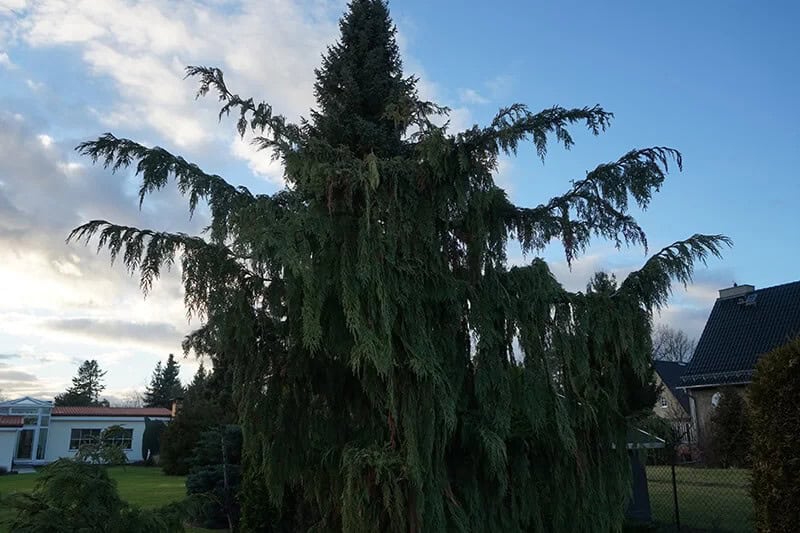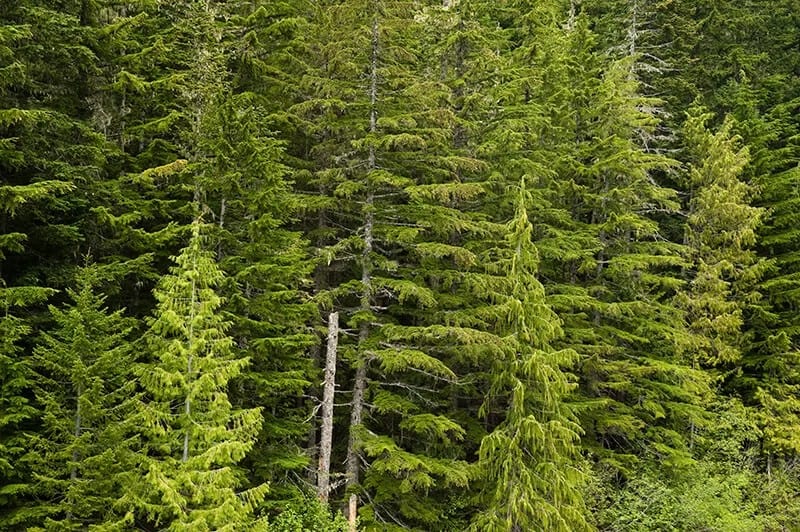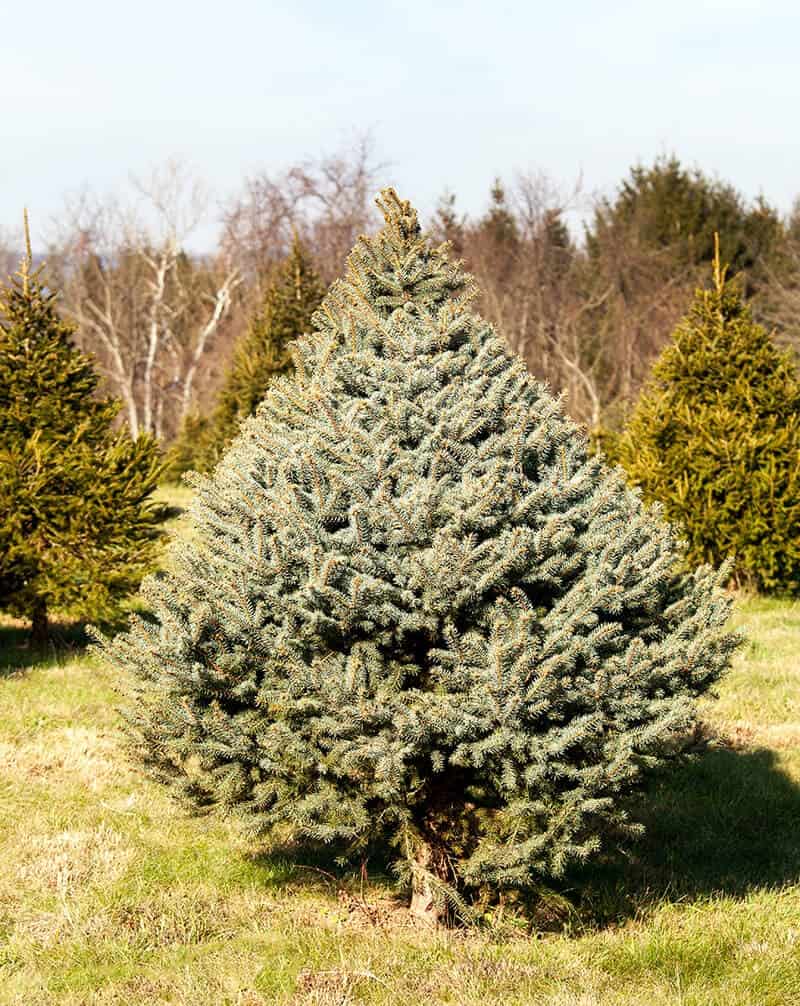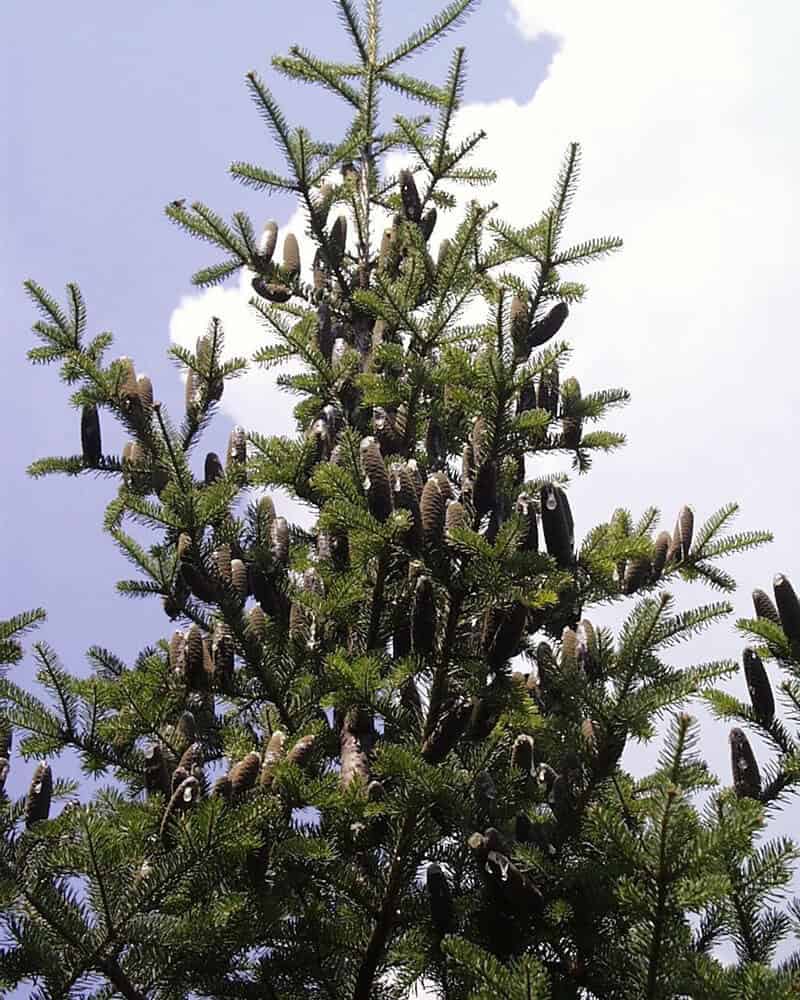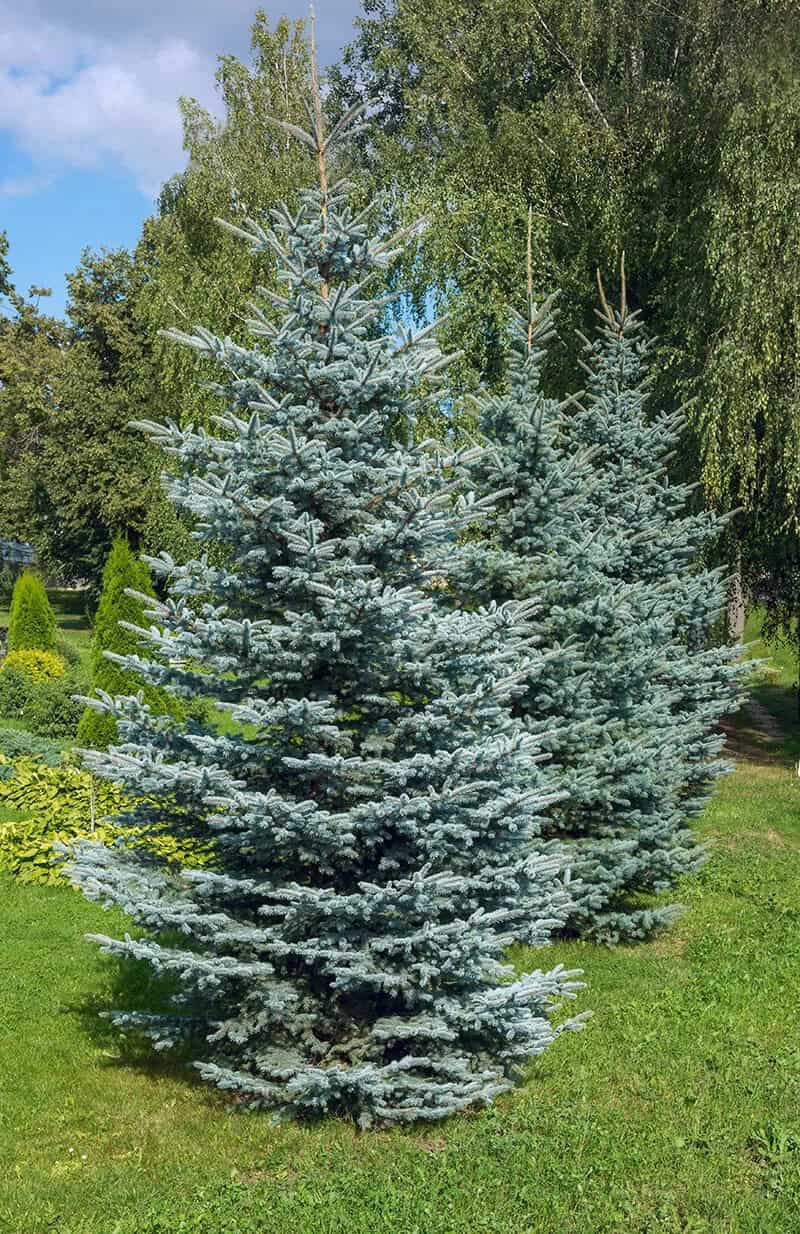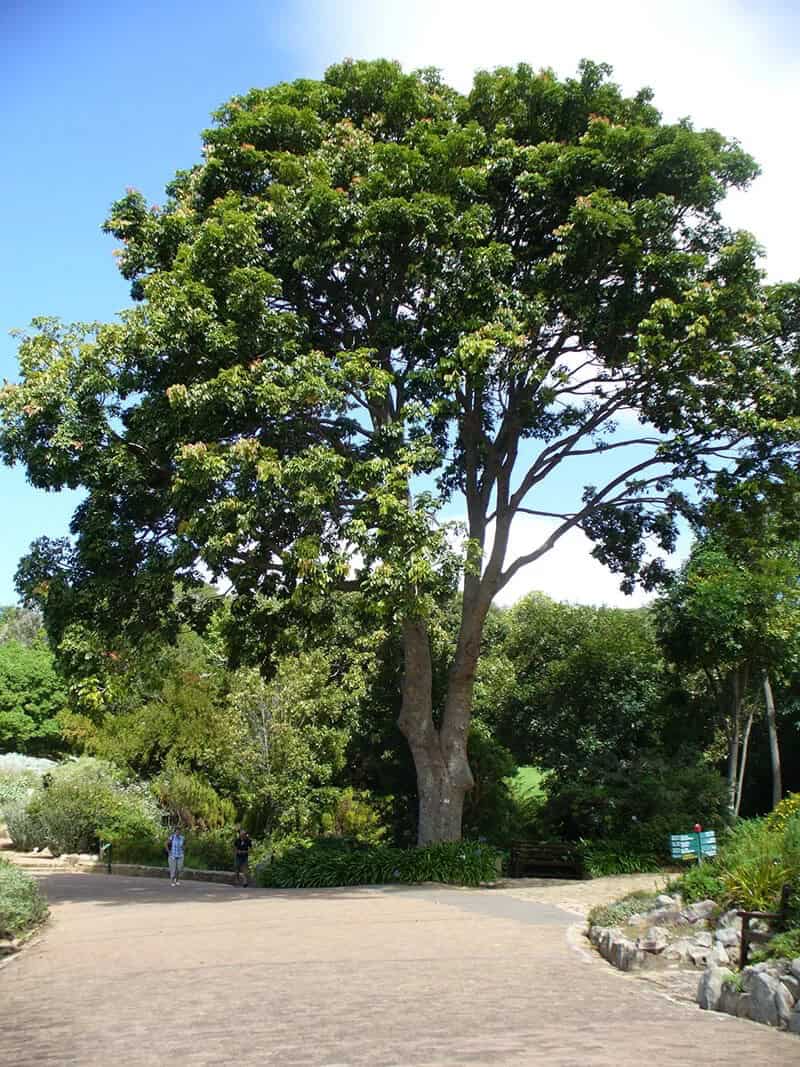Before incorporating various types of evergreen trees into your landscaping design, it’s essential to understand some key characteristics. Firstly, one of the most notable features of evergreen trees is that they do not shed their foliage throughout the year. This means that their leaves will continue to grow and thrive without falling off like deciduous trees do.
In fact, many species of evergreen trees are commonly used as Christmas or pine trees precisely because of this unique characteristic.
28 Gorgeous Types of Evergreen Trees
While evergreen trees can thrive in a variety of environments, from chilly to scorching temperatures, their defining characteristic remains their ability to retain their vibrant green hue year-round. In fact, these hardy trees come in many shapes and sizes, with some species reaching heights of over 60 feet. Moreover, certain regions are renowned for their abundance of evergreens, such as the Pacific Northwest.
Notably, the needles on these trees can grow up to 18 inches long, providing ample shelter from the elements. Furthermore, cones serve as a protective mechanism for seeds, ensuring their continued propagation. Evergreen trees belong to various families and species, with pine trees being one of the most recognizable and iconic examples. A conifer subcategory, pines are characterized by their needle-like leaves and soft timber. Here, we highlight some of the most well-known pine species.
The Eastern White Pine (Pinus Strobus)
With its majestic presence, the eastern white pine has been an integral part of the east coast’s ecosystem for centuries. Native Americans once revered this towering tree as the Tree of Peace, where they would gather to share stories and forge bonds. One of the most remarkable aspects of the White Pine is its remarkable longevity – some specimens are estimated to be over 200 years old, a testament to their resilience in the face of time.
Despite their massive size, these evergreens can thrive for centuries, reaching heights of at least 50 feet and widths of up to 25 feet. The pine needles that adorn their branches are slender and soft to the touch, measuring up to 5 inches in length and displaying a subtle blue hue when they cluster together.
The Ponderosa Pine (Pinus Ponderosa)
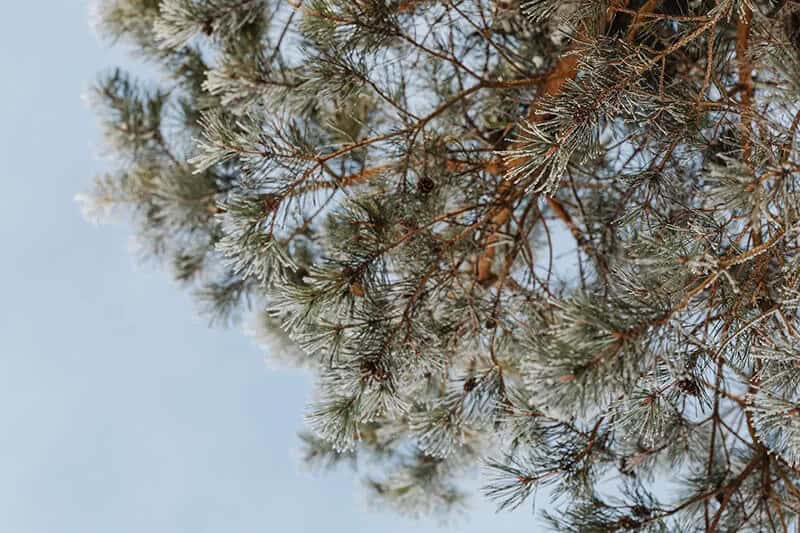
The majestic pine tree, standing tall at an impressive 125 feet in height and boasting a width of at least 25 feet, showcases its conical shape reminiscent of the pinyon pine. Dominant throughout the western regions, this timber boasts greenish-yellow needles that grow in bundles, with oval cones reaching lengths of up to 6 inches. The young trees sport a dark brown bark, which transforms into a scaly, plate-like pattern as they mature.
A unique characteristic of this tree is its pungent scent, similar to turpentine or resin, released when a needle, bark, or stem is crushed.
The Sugar Pine (Pinus Lambertiana)
Standing tall at heights of up to 250 feet, the Sugar Pine is an impressive sight to behold. Its branches cascade downwards due to the weight of its large pine cones, while its roots delve deep into the earth. The tree’s foliage is always prominent, with needles that grow in clusters and reach lengths of up to 3 inches. As the Sugar Pine matures, its trunk takes on a distinctive cinnamon-red hue, growing up to 10 feet wide.
One of its most notable features are its cones, which can reach an impressive 20 inches in length and 6 inches in width. Each cone contains seeds that can weigh several pounds when fully matured.
The Red Pine (Pinus Resinosa)
The majestic Red Pine tree stands tall at heights exceeding 115 feet, its trunk straight and crown conical, with reddish bark featuring a flaky texture. Its branches rise upwards and fan outwards, curved and spreading wide. A remarkable feature of the Red Pine is its ability to self-prune, as lower branches naturally detach, maintaining a tidy appearance.
The tree’s tips are adorned with needles that can reach lengths of over 4 inches, which break cleanly along their center when damaged, showcasing the tree’s remarkable resilience.
Eastern Hemlock (Tsuga Canadensis)
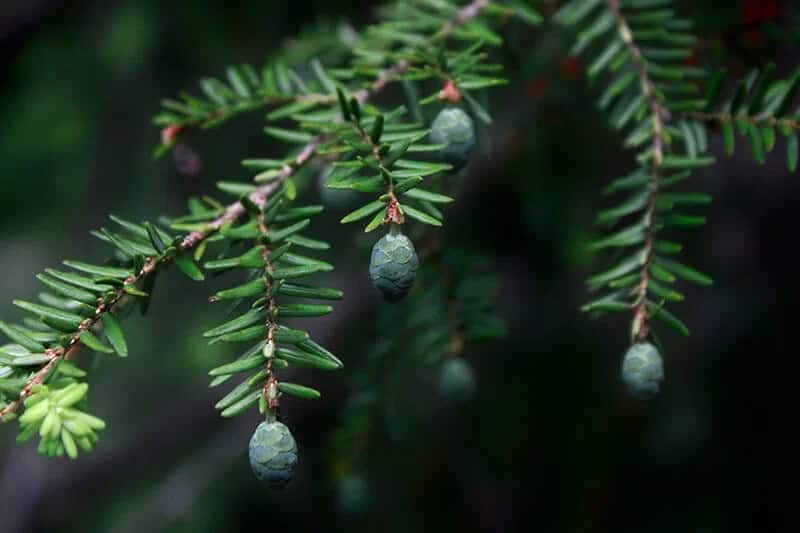
The eastern hemlock, a stunning woody evergreen, can be found thriving in the mountainous regions of the eastern United States. This majestic tree requires soil with excellent drainage and moisture levels, as well as ample sunlight to flourish. Its conical shape is a sight to behold, with branches that gracefully droop under the weight of cones. As a popular choice for landscaping, the healthy eastern hemlock can reach impressive heights of over 40 feet and widths exceeding 25 feet.
For a more compact addition to your home garden, consider incorporating a dwarf cultivar to maximize its impact.
Western Hemlock (Tsuga Heterophylla)
The western hemlock is characterized by its impressive stature, with some specimens reaching heights of nearly 200 feet and a base that can spread over 30 feet wide. Its diameter can stretch up to 9 feet, showcasing its robust presence. The tree’s habit is distinct, featuring a pyramidal, erect, and broad shape with a conical crown. One notable feature is the varying length and green hue of its needles. In terms of seeds, they are brown and abundant.
While it may be easy to confuse the western hemlock with its eastern counterpart, a closer inspection reveals significant differences in needle size and arrangement. Furthermore, a glance at the bark size and bud shape will also reveal distinct characteristics, setting these two species apart.
The Mountain Hemlock (Tsuga Mertensiana)
The mountain hemlock’s evergreen foliage is characterized by medium-sized needles with a narrow width. As the tree reaches its maximum height of 100 feet, it can take on a conical crown shape, with branches that spread out and dense foliage. The bark takes on a darkish-brown hue with scaly textures. A notable feature are the purple cone seeds that lighten in color over time.
This species is widely distributed across the Pacific Northwest, British Columbia, and Alaska.
However, its height can vary greatly depending on the environment it inhabits. In subalpine regions, mountain hemlocks typically reach heights of around 10 feet, whereas in lowland areas, they can soar to over 100 feet tall.
The Mediterranean Cypress (Cupressus Sempervirens)
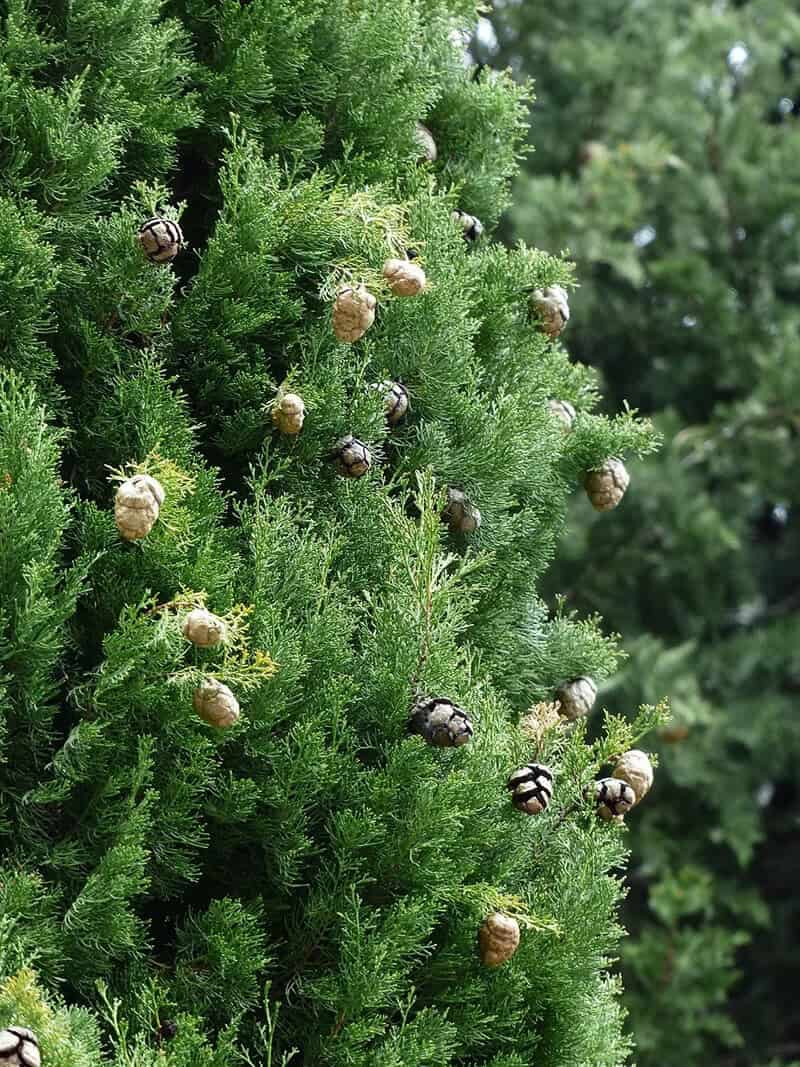
The Mediterranean cypress, characterized by its striking blueish-green needles and tall stature, thrives in mountainous and rocky regions or coastal areas. Its columnar shapes are often found in domestic settings, where it can grow to maturity and eventually stop growing. As the tree ages, it develops a remarkable ability to withstand drought, making it an attractive option for landscapes with limited watering options.
However, young Mediterranean cypress trees require ample water to establish themselves. To maintain its distinctive columnar habit, regular pruning is essential, resulting in minimal upkeep over time. When transplanting this species, it’s best to do so during periods of active root growth, typically in April or September.
The Bald Cypress (Taxodium Distichum)
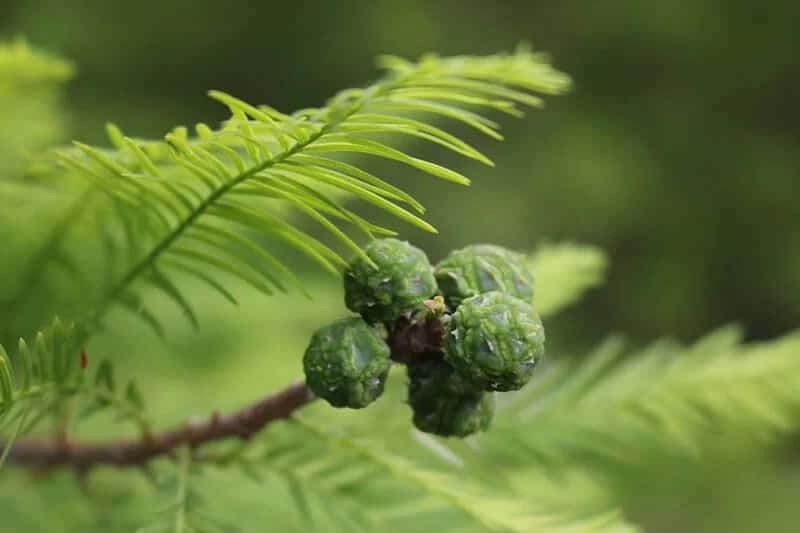
The Bald Cypress tree stands out as an evergreen species that defies traditional expectations. Its deciduous nature means it sheds its leaves seasonally, while its hardy constitution allows it to thrive in various environments. A mature Bald Cypress can reach remarkable heights of over 70 feet and span widths of up to 25 feet, with the older specimens developing a striking base diameter of around 6 feet as they stretch towards the sky.
In its youthful stage, the tree presents a pyramidal habit, gradually flattening out as it matures. This species is known for its remarkable longevity, having adapted to and survived the challenges posed by climate change. Its natural habitats range from coastal regions to swamps and water sources, showcasing its impressive resilience and ability to thrive in diverse ecosystems.
The Nootka Cypress (Callitropsis Nootkatensis)
The Nootka Cypress is a ubiquitous evergreen species found throughout the Pacific Northwest, thriving in areas with moist soil conditions along ravines, streams, and similar environments. Its distinctive branches feature pendulous sprays that flatten out, giving rise to a unique foliage display. The tree’s growth rate is relatively slow, eventually reaching heights of over 40 feet and widths of up to 15 feet.
However, when environmental conditions are favorable, the Nootka Cypress can experience rapid growth, with an annual increase of one foot or more. In its natural habitat, this species can reach towering heights of 90 feet.
The Monterey Cypress (Hesperocyparis Macrocarpa)
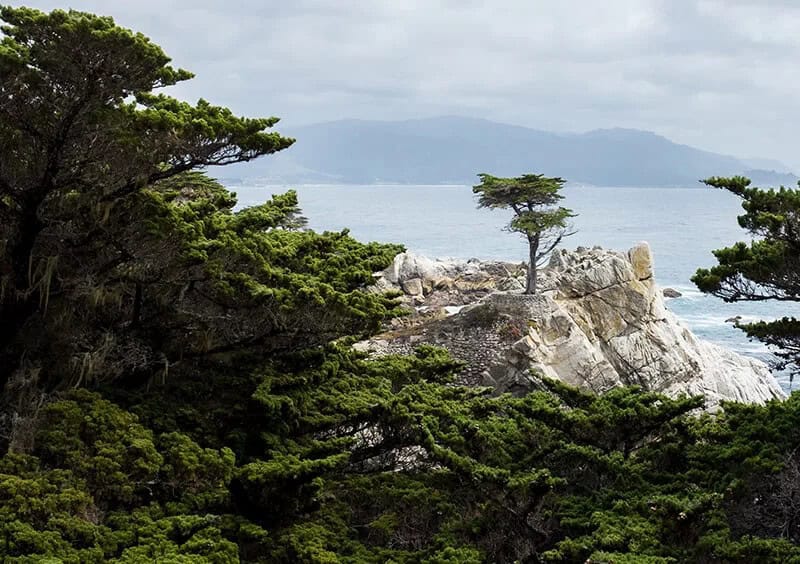
The majestic Monterey Cypress thrives in areas where salt spray and wind would be devastating to other tree species. Yet, despite these challenging conditions, its unique sculpting allows it to flourish, becoming a picturesque icon of the coast. Its contorted growth pattern bears resemblance to trees found at high elevations. As a young sapling, it grows rapidly, developing a pyramidal shape and narrow profile. Over time, it expands, flattening at the top and spreading its canopy outward.
This remarkable tree can reach heights of 90 feet and boast a sprawling canopy spanning 70 feet. Its trunk can swell to an impressive diameter of over 6 feet. Notably, the Monterey Cypress is renowned for its hardiness, allowing it to live well beyond 300 years, a testament to its remarkable resilience.
The White Fir (Abies Procera)
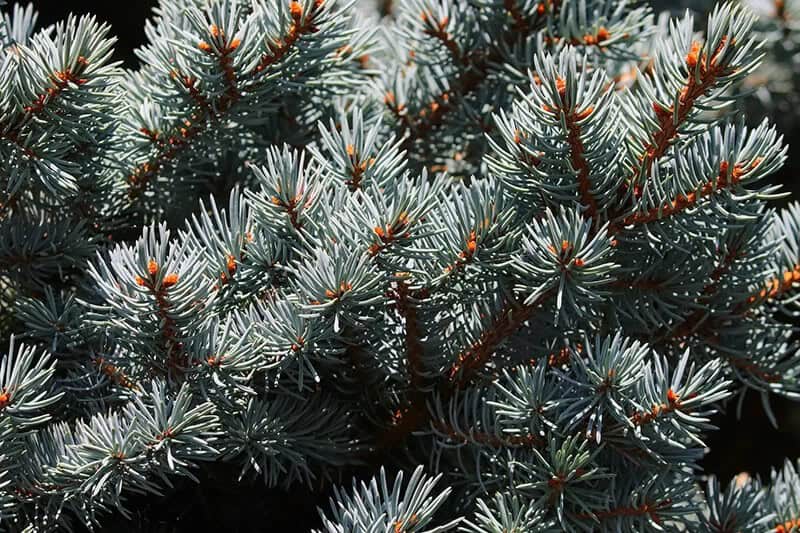
The majestic White Fir, often referred to as Noble Fir or Red Fir, boasts an unique characteristic – its numerous open layers. This distinct shape and growth pattern make it an ideal choice for Christmas decorations. The tree’s grayish-blue needles and silverish-gray bark are equally striking, while its cones can grow up to five inches in length. Native to the northwest, the White Fir can reach impressive heights of 50 feet or more, with some specimens towering above 300 feet.
Its grandeur is undeniable, making it a popular choice for holiday displays.
Hemlock Trees: The Douglas Fir (Pseudotsuga Menziesii)
The Douglas Fir, an evergreen pine native to the west coast, is comprised of three distinct varieties: the Mexican Douglas Fir, Coast Douglas Fir, and Rocky Mountain Douglas Fir. Often referred to as false hemlocks, this tree boasts distinctive features, including forked cones that form bracts and can grow up to 4 inches in length or longer, with a tendency to droop. Its needles, measuring around 1 inch in length with a white band underneath, are characterized by their green color.
When crushed, these needles release a strong fragrance.
The Fraser Fir Trees (Abies Fraseri)
Within the Appalachian Mountains, a species of fir trees can be found that’s commonly referred to as the Balsam Fir, although technically it’s known as the Fraser Fir. This evergreen boasts a conical shape while it’s young, growing up to 50 feet tall with a thick trunk that can reach over two feet in diameter. Its popularity during the holiday season is undeniable, and many farmers cultivate this species specifically for Christmas tree purposes.
One of its most notable features is its fragrant needles, which can remain potent for an extended period. You can find the Fraser Fir thriving in recreational areas and gardens across the region.
The Balsam Fir Trees (Abies Balsamea)
The Balsam Fir’s impressive range spans across Alberta and as far south as Pennsylvania, with a native environment that thrives in cooler climates. This evergreen’s growth habits are highly specific, requiring acidic, moist, and well-draining soil conditions to flourish. Interestingly, when the needles of the Balsam Fir are crushed, they release a distinctive aroma, while the tree’s bark and cones produce an abundance of sap.
The shape of this fir tree can range from conical to a narrow, symmetrical crown, with upright cones being a notable characteristic. Its needle structure provides exceptional durability, allowing it to withstand harsh cold months with ease.
Grand Fir (Abies Grandis)
The majestic Grand Fir tree, native to the Pacific Northwest, thrives in high-altitude environments. This coniferous species is classified into two subcategories based on its growing conditions, with one type reaching remarkable heights along the coast. When incorporated into landscaping designs, the Grand Fir’s impressive stature makes it an ideal choice for naturalizing areas, while its pleasant fragrance and versatility as a Christmas tree only add to its appeal.
Moreover, this versatile tree provides crucial shelter, nesting sites, food sources, and protection from predators for various wildlife species, making it an integral component of ecosystems in the region.
The Norway Spruce (Picea Abies)
The Norway Spruce, an evergreen tree of medium stature, can reach heights of up to 60 feet and widths of approximately 30 feet. Its conical and pyramidal shape is characterized by drooping branches, with a more spreading habit in its juvenile form. The branchlets themselves also exhibit a downward trajectory. As the tree matures, its bark transitions from thin to thick, taking on a brownish-gray hue. The foliage consists of 1-inch green needles, each featuring four sides aligned in a row.
Upon maturity, the cones assume a silver coloration and can reach lengths of up to 6 inches.
Colorado Blue Spruce (Picea Pungens)
The Colorado Blue Spruce is a dense evergreen that can grow quite large, boasting a pyramidal habit with silvery to bluish-green needles and horizontal branches. Its striking appearance and color make it a popular choice for ornamental purposes. This majestic tree can reach heights of up to 60 feet, with a width of approximately 20 feet, making it an ideal accent piece that also serves as a natural windbreak.
The tree’s curved, stiff needles can grow up to 1 inch in length, adding to its unique charm. As the cones mature, they take on a cylindrical shape, further enhancing the tree’s distinctive appearance.
The Black Spruce (Picea Mariana)
The Black Spruce’s distinctive conical shape tapers as it grows, and its ideal climate conditions include cool temperatures and hardiness zones that thrive in moist soils. This evergreen tree plays a significant role in the paper-making industry, with its pulp being used to create various paper products. Found throughout North America and Canada, particularly in the northern regions, the Black Spruce is characterized by its dark, blue-green needles with upturned tips.
The descending branches of this tree feature a sweeping motion, adding to its unique aesthetic appeal. Moreover, it exhibits remarkable tolerance for wet soils and cold climates, making it an adaptable species that can thrive in various environments.
The Giant Sequoia (Sequoiadendron Giganteum)

The majestic tree, captured by photographer Spencer DeMera from unsplash. com, boasts a unique orange hue with deep red undertones. Its main branches often only emerge at considerable heights, giving this stately Sequoia its signature silhouette. Unlike some of its ancient counterparts, this evergreen giant can reach tremendous heights in relatively short order, without requiring centuries to mature.
While many Sequoias are indeed considered venerable, this particular specimen has likely aged thousands of years, a testament to the species’ remarkable longevity.
The Coast Redwood (Sequoia Sempervirens)
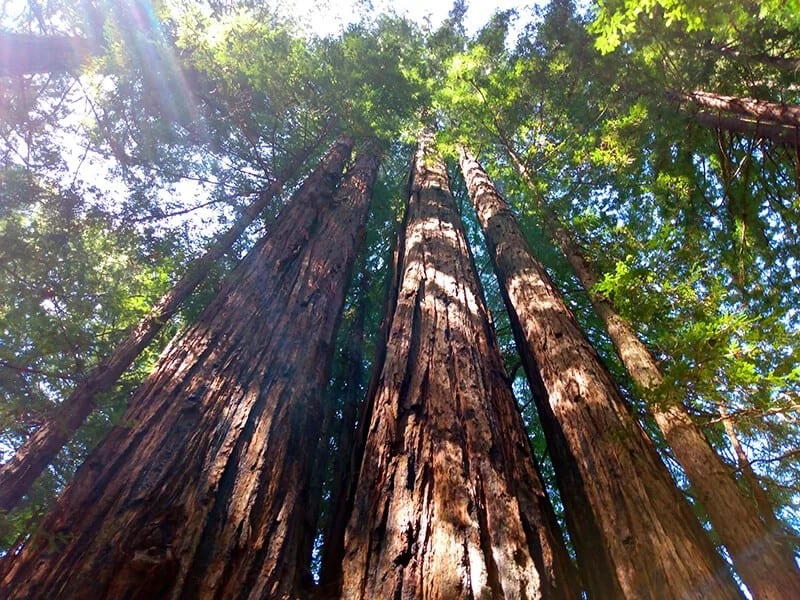
The Coast Redwood is another remarkable species that has thrived for centuries. These evergreen giants can reach astonishing heights of up to 380 feet, with trunks that rise from the ground and branches that initially grow horizontally and pyramidally. As they mature, the lower branches are gradually lost, giving way to a conical shape. Despite their impressive size, Coast Redwoods can grow surprisingly quickly, averaging around 3 feet per year.
Today, these natural wonders are protected in many state and national parks, including the renowned Redwood National Park.
The Common Yew / European Yew (Taxus Baccata)

Throughout the growth area of the Common Yew, this evergreen plant dominates the landscape. It’s essential to recognize the toxicity of the Yew species, as exposure can occur through skin contact and inhalation if the toxin is released into the air or soil. With a conical shape and capable of reaching heights of up to 60 feet when grown as a shrub or tree, the Common Yew boasts dense, sprawling branches adorned with green needles.
Interestingly, despite being a coniferous species, only male Yews produce cones that are seedless, while female Yews bear fruit in the form of scarlet red berries, each encasing seeds within arils.
Hemlock Trees: The Pacific Yew (Taxus Brevifolia)
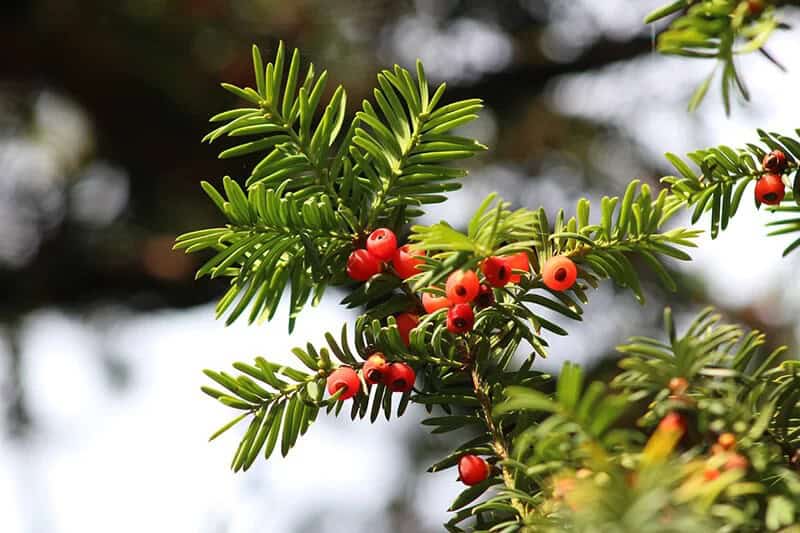
The Pacific Northwest is renowned for its lush evergreen forests, and the Pacific Yew is another notable species found within these ravines, slopes, stream banks, and dense woodlands. Characterized by a robust, hardwood timber, this tree is not heavily exploited commercially. However, when utilized, it’s typically for crafting wooden paddles for canoes, handles, and posts.
Its durability makes it an ideal material for creating bows, a fact that has made it a staple in the toolkits of Native American Indians, who used it to fashion hunting equipment. The Pacific Yew’s unique features include its needle-like leaves and bright red fruit, which can often be found growing amidst maple, fir, and hemlock trees. Its trunk is frequently adorned with lichens and moss, adding to its natural charm.
Interestingly, the tree’s toxicity means that it should not be consumed by animals, underscoring the importance of respecting these ancient forests.
The Canadian Yew (Taxus Canadensis)
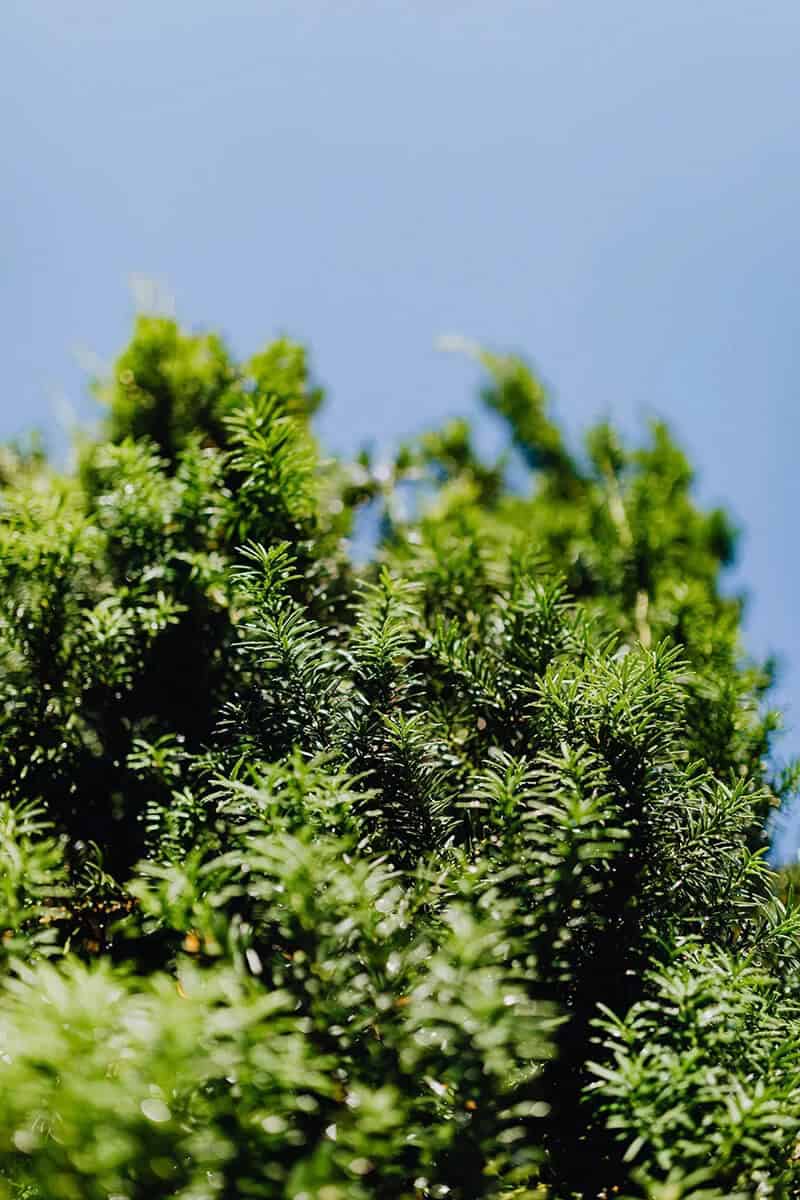
The Canadian Yew’s natural habitat is characterized by swampy environments, lake and stream banks, and ravines. Its presence can also be found in North Carolina’s mountainous regions. As an evergreen species, it thrives in shady areas with cool, moist soil conditions. A unique feature of the Canadian Yew is its ability to form colonies when its stems touch the ground.
Typically growing no taller than 5 feet, this low-maintenance plant can be used for ground coverage or to stabilize soil along bogs, streams, and ponds.
Evergreen Species: The Tamarind (Tamarindus Indica)
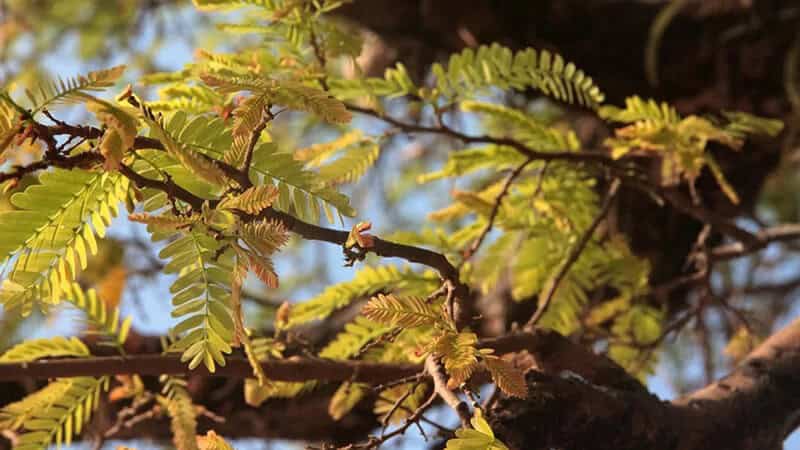
The Tamarind tree, an evergreen native to East Africa, can grow up to 65 feet tall in tropical regions. Its stout trunk and short stature are characteristic of other tropical hardwoods, while its spreading crown and arching branches support a canopy of light green leaflets. During the summer months, the tree produces colorful flower blooms that eventually droop and give way to pods filled with fruit similar to beans.
As the fruit ripens, it transforms into an edible pulp used in various culinary dishes. Interestingly, despite being an evergreen, the Tamarind tree’s leaves will fall in dry climates, highlighting its adaptability to different environmental conditions.
Evergreen Species: The Mahogany (Swietenia Mahagoni)
The Mahogany tree, with its distinctive red straight grain, is a popular choice for growing shade evergreens. Native to tropical regions, these trees can grow quite tall, with some varieties reaching heights of up to 75 feet and spreading outwards by as much as 50 feet. As the wood matures, it develops a rich red hue, making it a sought-after material for various applications.
The tree’s leaflets are characterized by their feather-like appearance, while the flowers form clusters and produce woody fruit containing winged and square-shaped seeds. When properly trained for landscaping purposes, the dense wood of the Mahogany can withstand strong winds, making it an excellent option for creating a sturdy and attractive landscape feature.
Evergreen Species: The Eucalyptus (Eucalyptus)

The Eucalyptus, a resilient evergreen shrub or small tree, boasts stems of moderate length. Its versatility lies in its ability to thrive as a woody shrub, one of many types of evergreen plants. While it displays remarkable tolerance to drought, it will succumb to cold temperatures. It’s essential to note that excessive consumption can lead to poisoning, while minor skin irritation may occur upon contact.
In their natural habitat, Eucalyptus trees are not typically found in forests, instead thriving in the Australian outback and warm regions worldwide. With over 200 species to explore, one common characteristic among them is the fibrous and smooth texture of their leaves, accompanied by striking silver-hued bark.
Evergreen Species: The Rhododendron

The Rhododendron, often nicknamed the ‘red tree’, is an evergreen plant with woody growth and striking red flowers. This versatile species can thrive in various forms, ranging from compact plants to tall trees, depending on the hardiness zone. For instance, a dwarf Rhododendron may reach only 4 inches in height, while others can grow up to 40 feet tall, boasting thick evergreen leaves that remain lush year-round.
Interestingly, some varieties are deciduous, and their flowers can be scented or unscented, with shapes ranging from the classic funnel form to a multitude of other styles. The colors on display are equally impressive, featuring a palette of blue, scarlet, white, pink, yellow, and purple hues.
Frequently Asked Questions about Evergreen Trees
How many types of evergreen trees are there in the world?
With over 600 species of evergreen trees scattered across gardens and natural habitats, these remarkable plants showcase an incredible range in size. From the diminutive dwarf fir to the towering giants like the redwood or sequoia, some evergreens have even been known to thrive for thousands of years. What sets them apart from their deciduous counterparts is the unique characteristic of producing cones that protect their seeds.
The cones serve as a vital shield against harsh environmental conditions. Evergreen leaves are similarly distinct, featuring a scale or needle-like shape that, although less efficient in terms of photosynthesis compared to broader leaf structures, allows them to thrive in diverse climates and environments.
What evergreen tree grows the fastest?
With ideal conditions, an evergreen tree can flourish rapidly. Take the Murray Cypress for instance, which can grow a remarkable 4 feet in just one year – that’s impressive! As it reaches its maximum height of approximately 40 feet, with a substantial 10 foot width at its base, this fast-paced growth becomes even more noteworthy.
What is the fastest growing evergreen tree for privacy?
For those seeking privacy screens, the Arborvitae offers an unparalleled solution. This versatile evergreen can be pruned into a dense hedge or left to flourish as a majestic tree. At maturity, it can reach heights of up to 15 feet and widths of approximately 4 feet. One of its most impressive features is its rapid growth rate, with young trees capable of increasing in height by at least 12 inches per year.
Which are the best types of evergreens for landscaping?
For a lush and inviting landscape, incorporating evergreen varieties is a great starting point. Consider adding Oakland Holly, Black Dragon Cryptomeria, Little Gem Magnolia, Carolina Sapphire Cypress, or Blue Point Juniper to elevate the curb appeal of your outdoor space. These carefully selected options will not only provide year-round interest but also create a welcoming atmosphere that showcases your home’s unique character.
Which are the most common types of evergreens?
Evergreen trees have long been a staple of many landscapes, with coniferous species being the most prevalent. These trees produce seeds that are encased within cones, providing protection and allowing for dispersal. Within this group, you’ll find a diverse array of conifers, including the majestic Redwood, the fragrant Cypress, the adaptable Fir, the stately Hemlock, the versatile Pine, and the ancient Yew.
In contrast, broadleaf evergreens also hold a special place in nature, comprising trees like the aromatic Wax Myrtle, the mighty Live Oak, the showy Magnolia, and the prickly Holly.
How long does an evergreen tree grow?
While some gardeners assume that evergreens stop growing once they produce seed-bearing cones, the reality is more nuanced. In fact, the time frame for this transition can vary significantly, ranging from as little as 6 years to upwards of 30 years or more, depending on factors such as the type of evergreen, its growing conditions, and its growth rate.
Everything You Wanted to Know about Different Types of Evergreen Trees
The versatility of evergreen trees is truly impressive, with numerous species offering distinct benefits for your home’s landscaping or garden. Whether you’re seeking shade, hedges, wind protection, or simply a dash of year-round greenery, evergreens can provide the perfect solution. With their ability to thrive in various climates and conditions, it’s no wonder that incorporating an evergreen into your outdoor space can be a game-changer.
As you explore the world of evergreen trees, we hope our discussion on the different types has piqued your interest and inspired appreciation for these remarkable plants.
